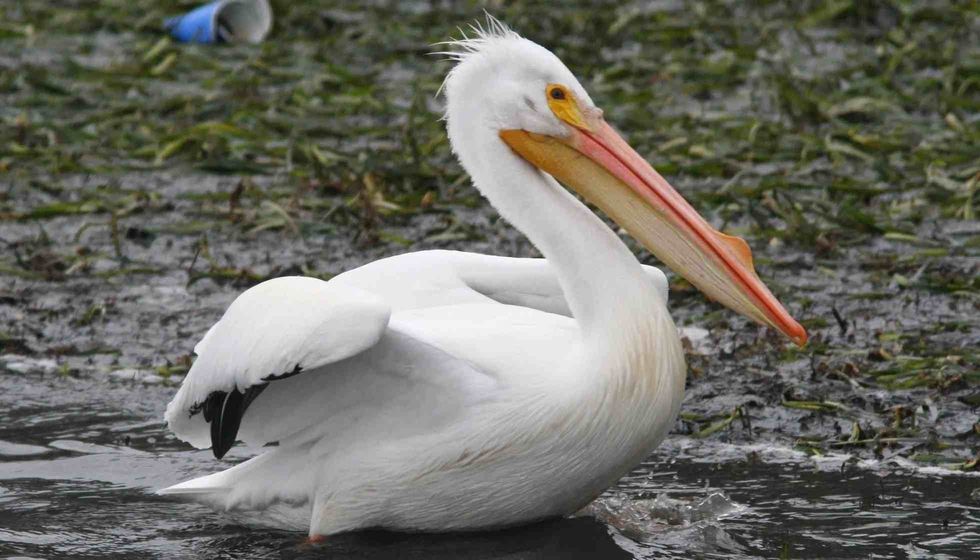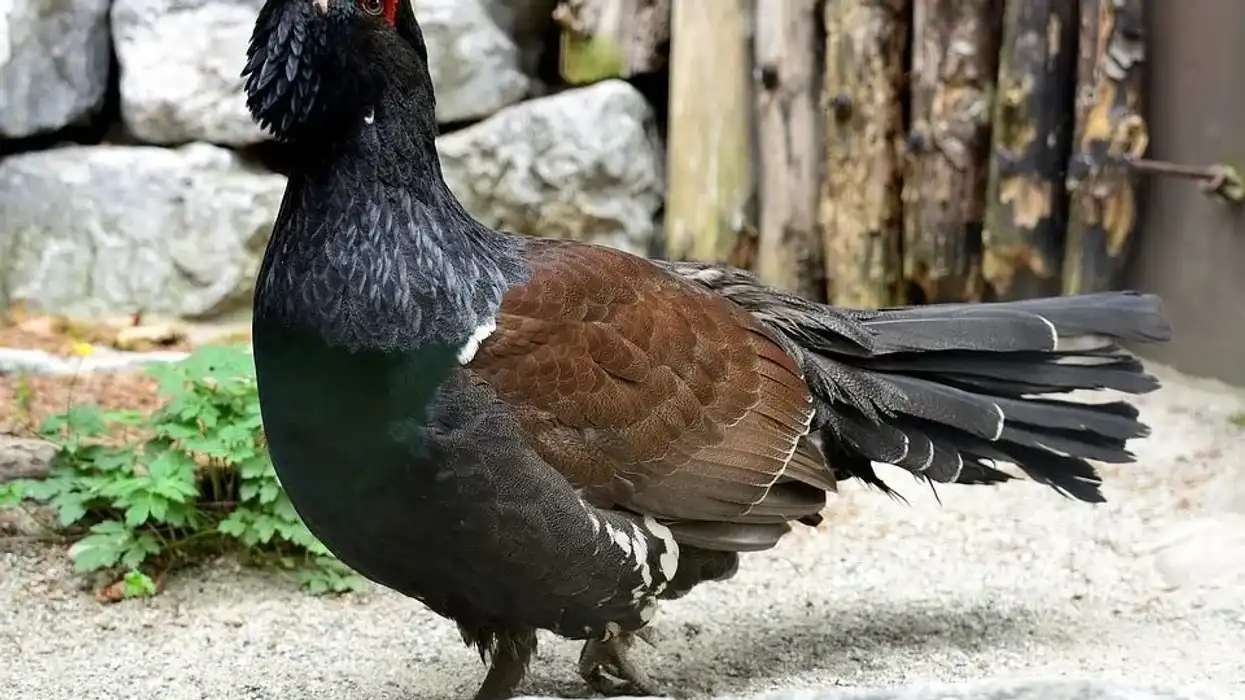The American white pelican is a majestic bird that can be found around the coasts and inland waterways of the North American shores. The American white pelican (Pelecanus erythrorhynchos) are large, white-feathered waterbirds.
The head has gray plumage while its bill varies from black to brown depending on location. Have you ever seen their webbed feet designed for paddling?
It's no wonder they're called pelicans. The American white pelican (Pelecanus erythrorhynchos) is a bird with an impressive wingspan. They have the largest beak of any other North American waterbird.
One interesting fact about this species is its ability to dive underwater and hold its breath for up to 20 minutes before surfacing again. Now you know, next time your walk down by the lake don't forget your camera or binoculars because these birds are always worth watching.
They have webbed toes for swimming with their heavy bodies and are capable swimmers when the need arises, mostly during migration. It's not uncommon for them to fly high above sea level in order to find food or shelter from storms.
This species lives predominantly by lakes, rivers, estuaries, and baysides. They like wet places where there is plenty of fish available nearby.
The most interesting fact about this creature? Their diet consists entirely of whole fish which it mostly acquires by dashing its head underwater. They often nest in colonies on islands or remote coastal areas where they forage through the day hours by diving below the surface of the water.
The American white pelicans breed of order Pelecaniformes, family Pelecanidae are aquatic birds that have a voracious appetite for fish. The American white pelican's gullet is lined with sharp teeth-like spurs used for tearing through their prey like scissors cutting paper.
For more relatable content, check out these prairie falcon facts and pygmy falcon facts for kids.
American White Pelican Interesting Facts
What type of animal is an American white pelican?
The American white pelican is a large and beautiful bird with an unmistakable appearance. American white pelican pelecanus birds are widely recognized for their enormous size, sleek black feathers, and long neck at the front of their head that tapers down to their beak on top of their body.
What class of animal does an American white pelican belong to?
American white pelicans belong to the class Aves, order Pelecaniformes, family Pelecanidae, and genus Pelecanus.
How many American white pelicans are there in the world?
The most recent estimate for the number of American white pelicans was at 3 million breeding pairs worldwide.
Where does an American white pelican live?
This bird lives by big waterside spaces such as lakes and rivers where it can find plenty of food under its wings, namely fishes. This great-bodied avian creature enjoys soaking up some rays in large flocks near their nest when not diving deep into pools for their lunchtime meals.
What is an American white pelican's habitat?
The American white pelican has a habit of nesting on the ground near bodies of water. They live in eastern North America and are found as far north as Alaska to southern Canada, and southward to Florida.
They are found in many places around the world but their habitat is mostly on coastal waters and oceans so they are close to food sources.
Who do American white pelicans live with?
American white pelicans live in large flocks ranging up to 1000.
How long does an American white pelican live?
There are many factors that determine how long a pelican lives. If they live in the wild, their life may be cut short by predators or other dangers such as natural disasters and epidemics.
How do they reproduce?
Female American white pelicans typically lay two eggs. The American white pelican is a species of bird that lays its eggs on floating vegetation and then leaves them to incubate.
American white pelicans are an interesting bird to watch during its breeding season. The breeding season is typically between April to July. Their breeding season needs very specific water conditions for successful fertilization.
What is their conservation status?
American white pelicans have a conservation status of Least Concern for now. Currently, their populations have not been impacted by human disturbance.
American White Pelican Fun Facts
What do American white pelicans look like?
The name ‘pelican’ comes from a French word meaning 'to catch fish by dipping one's bill into the water repeatedly' in the search for food. These large sea-birds feed their young by regurgitating small prey items for them.
They also sport long, pointed bills with an orange-yellow head that contrasts against their black neck and shoulders. They are also known as white pelicans due to their unique coloring scheme which consists of pure, white feathers with black markings outlining each wing feather.
They have a large bill which they use to scoop up fish from the water's surface or shallow depths in order to eat them whole.
The coloration on their head can vary depending upon age. Adults will often sport darker spots while younger ones may only show light patches here and there around their face as they mature through adolescence into adulthood.

How cute are they?
You may not think that an avian with a large bill could possibly make anyone go 'aww', but it does happen every day when we see these pelicans along our coastlines.
How do they communicate?
The pelican American white birds use their wings and talons to communicate with each other. Pelicans use one long call followed by another short 'chittering' type sound before taking off into flight then diving back down again to catch more prey under choppy waves until satisfied.
How big is an American white pelican?
The pelican American white birds are recognized by their distinctive appearance. They have a sleek body that ranges from 50-75 in (130-190 cm) tall depending on gender as well as white feathers which cover most parts of them except one backside panel where black colors take over.
How fast can an American white pelican fly?
There is varied evidence for the average flight speed of an American white pelican, but its exact speed is not known.
How much does an American white pelican weigh?
This white pelican American species weighs 8–30 lb (3–14 kg), but they are able to fly just as well without needing any momentum from their legs by reaching great speeds. It is almost four times smaller than an ostrich!
What are the male and female names of the species?
The white pelican American birds are some of the most recognizable birds in America. There's no gender-specific name for a pelican, both are known as pelicans.
What would you call a baby American white pelican?
The white pelican American bird's babies are known as chicks. When they're not swimming around, you'll find them sitting on their parents' backs in the breeding colonies.
What do they eat?
These birds primarily eat fish but will also feed on other animals when they are available such as small crabs, shrimp, fish, and even duck. These birds themselves are food for coyotes.
Are they dangerous?
A common misconception about the American white pelican is that they are a threatening species, but in reality, these birds are not so dangerous and mind their own business.
Would they make a good pet?
Don't try to take home this creature. They are better off with their nesting colonies instead of in a house, even if you can afford one as a pet.
Did you know...
A group of pelicans is called a pod that can contain anywhere from 100-1000 birds.
White pelicans are rare, majestic birds that are only found in the Northern Hemisphere. They spend summers swimming around lakes and estuaries while migrating south during winter to warmer climates.
What are the different types of pelicans?
The different types of pelicans are American white, brown, Australian, pink-backed, Dalmatian, spot-billed, great white, and Peruvian.
Most species have an American winter range which include a group of coastal states where you can find them migrating from December to March or April each year looking for warmer weather.
Why is the American white pelican endangered?
The American white pelican is one of many similar species that do not fit into any current endangered or threatened category yet still receives protections due to treaties with other countries.
The American white pelican has been deemed worthy enough to be preserved for the future due only partly to its own merits, rather it also owes some credit for being included under the protection.
Here at Kidadl, we have carefully created lots of interesting family-friendly animal facts for everyone to discover! Learn more about some other birds from out sea eagle facts and white gyrfalcon facts pages.
You can even occupy yourself at home by coloring in one of our free printable American white pelican coloring pages.









